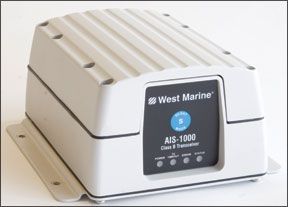In your testing of the West Marine AIS1000 (September 2009), did you identify what NMEA sentences it outputs? I’m thinking of buying one and agree that their documentation is not adequate. I’m trying to determine whether it can be used

Photo by Al Herum
288
as a general-purpose, backup GPS receiver.
John Poindexter,
Bluebird, 1990 Hunter Passage 43
Annapolis, Md.
Unfortunately, we’ve returned the unit, so we’re not able to check out the NMEA sentences ourselves. (NMEA sentences are self-contained lines of data that NMEA-compliant electronics transmit/receive in order to communicate with other NMEA-compliant electronics.) Instead, we pitched the query to West Marine (
According to Chuck Hawley, West Marine’s vice president of product information, “There’s no reason not to use the AIS1000 NMEA output as an additional source of position information, either on its serial port or NMEA data output. As a default, the AIS1000 outputs NMEA GPRMC every 4 seconds (older models) or every 1 second, if desired. (The GPRMC is the most common NMEA sentence, which includes most everything a GPS application needs like latitude, longitude, speed, bearing, satellite-derived time, fix status and magnetic variation.)
“What’s not as clear is whether all chartplotters can be directed to use the GPRMC sentence from the AIS NMEA input. I suspect that most plotters will have a ‘GPS source’ option so that the chartplotter could be instructed to use the NMEA input rather than the standard GPS antenna signal. This function is largely dependent on the chartplotter, not the AIS.”
The AIS maker, SRT Marine, added this comment: “The configuration of GPS output is performed using proAIS. The unit can be set to output a GPRMC sentence either every second, every four seconds, or not at all. (New units are set to transmit lat/lon every second.) This position output can be used by plotters as position source; however, be aware that not all plotters will accept both AIS data and GPS data on the same NMEA input. Raymarine multi-function displays do accept the GPS and AIS combined, but newer Garmin units don’t seem to like the combination.
“Also, some plotters don’t like having two GPS sources (i.e., from an internal GPS and the AIS). This can cause some plotters to ‘hop’ between the position provided by the AIS and that provided by the internal GPS. So the general rule is to only connect one GPS source to the plotter, and everything will be fine.
“The GPS receiver in our AIS (WM AIS1000) has been performance tested against the international standard applied to GPS on SOLAS vessels, so it’s a proven accurate and stable position source either as primary or ‘backup’ GPS.”
The manufacturer also noted that older AIS1000 units were shipped with WAAS/EGNOS disabled. This is because the European EGNOS system (equivalent to WAAS) was in “test mode” until late October and not recommended for safety-critical applications. EGNOS is officially fully operational now, so new West AIS1000 units have WAAS enabled.
AIS1000 owners whose units did not come WAAS enabled can contact West Marine to have the setting changed. The programming is done at the West headquarters in California. For questions, technical advice, or to have your AIS1000 updated (enable WAAS, send GPRMC every one second), call West Marine at 800/262-8464.


































